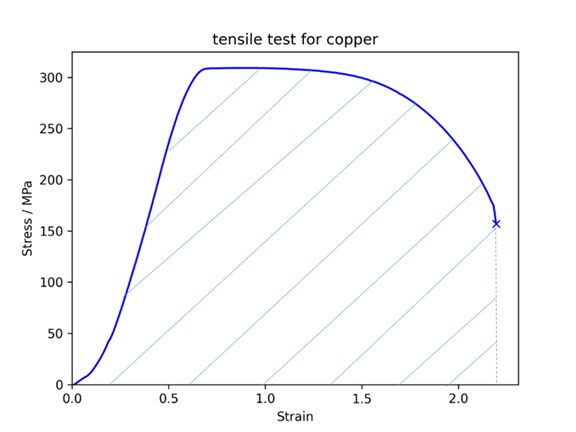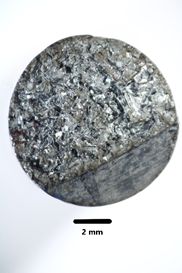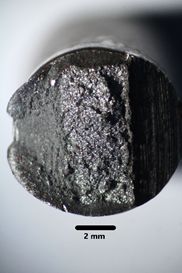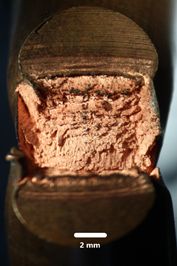Fracture: toughness

Figure 14. One measure of toughness is the energy absorption per unit area until fracture, indicated by shaded area under the stress strain curve
We now return to our tensile test for the final time and focus on the area under the stress-strain curve. The energy absorbed by the material per unit volume is given by the area under the curve, as the work done is:
\[ W = \smallint F\rm{d}x = \smallint \left( {\sigma A} \right)\left( {{l_0}\rm{d}\varepsilon} \right) = V\smallint \sigma \rm{d}\varepsilon \]
where the volume of the material is \( V = A{l_\rm{0}} \)
Toughness describes a material’s resistance to fracture. We can depict this quantitatively by measuring the amount of energy per unit volume a material can absorb before fracture.
Ductile materials undergo a relatively large amount of plastic deformation via a process known as necking before failure by fracture, and absorb more energy, thus have a relatively high toughness. A good example of a ductile material is copper.
Brittle materials hardly undergo any plastic deformation before fracture; they absorb less energy before fracture and thus have a relatively low toughness. Most ceramics are brittle.
Fracture is the failure process driven by crack propagation. A crack is a small flaw or notch and can be either inside the material or on the surface of the material. Because of the crack geometry, the applied tensile stress is amplified at the crack tip.
In ductile fracture, the crack is stable. It resists further growth unless the applied stress is increased, as a result of work hardening around the blunt crack tip. The process proceeds slowly as the crack length is extended, which allows necking to take place before fracture. The final fracture surface is rough with irregular fibrous appearance.
In brittle fracture, the crack is unstable. The crack tip is sharp with a high localised stress concentration. Crack propagation will continue spontaneously without increase in magnitude of the applied stress. Therefore, the crack grows rapidly. The final fracture surface is smooth and flat.



Figure 15. Fracture surface of brittle zinc (left), ductile mild steel (middle) and copper (right)
We can increase the toughness of a material in various ways. Please see the toughening and brittle fracture TLP for a detailed description for ductile and brittle fracture.

